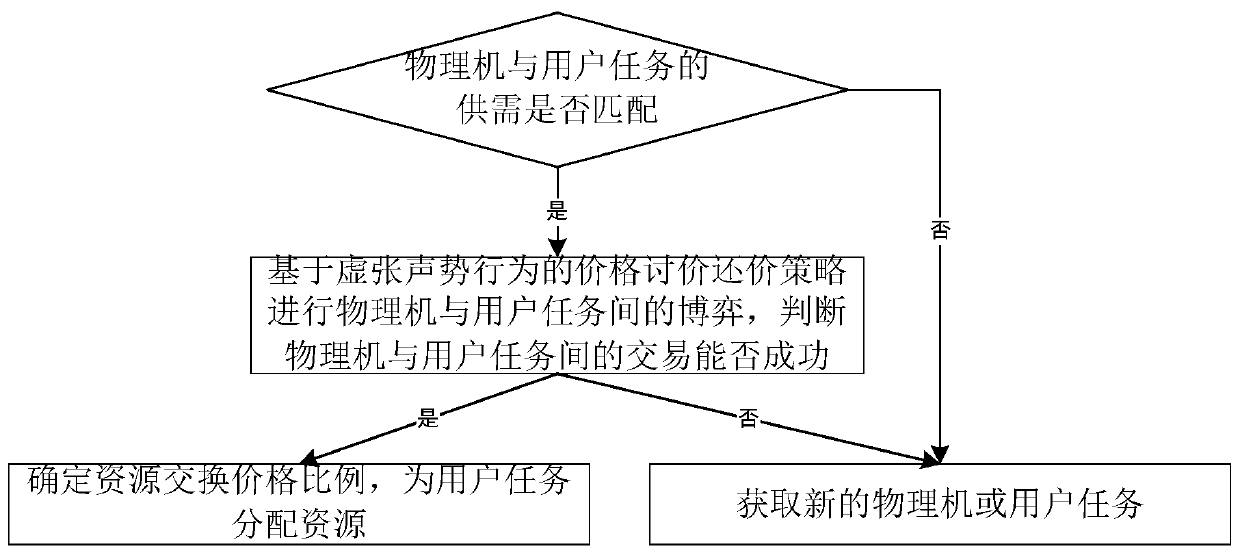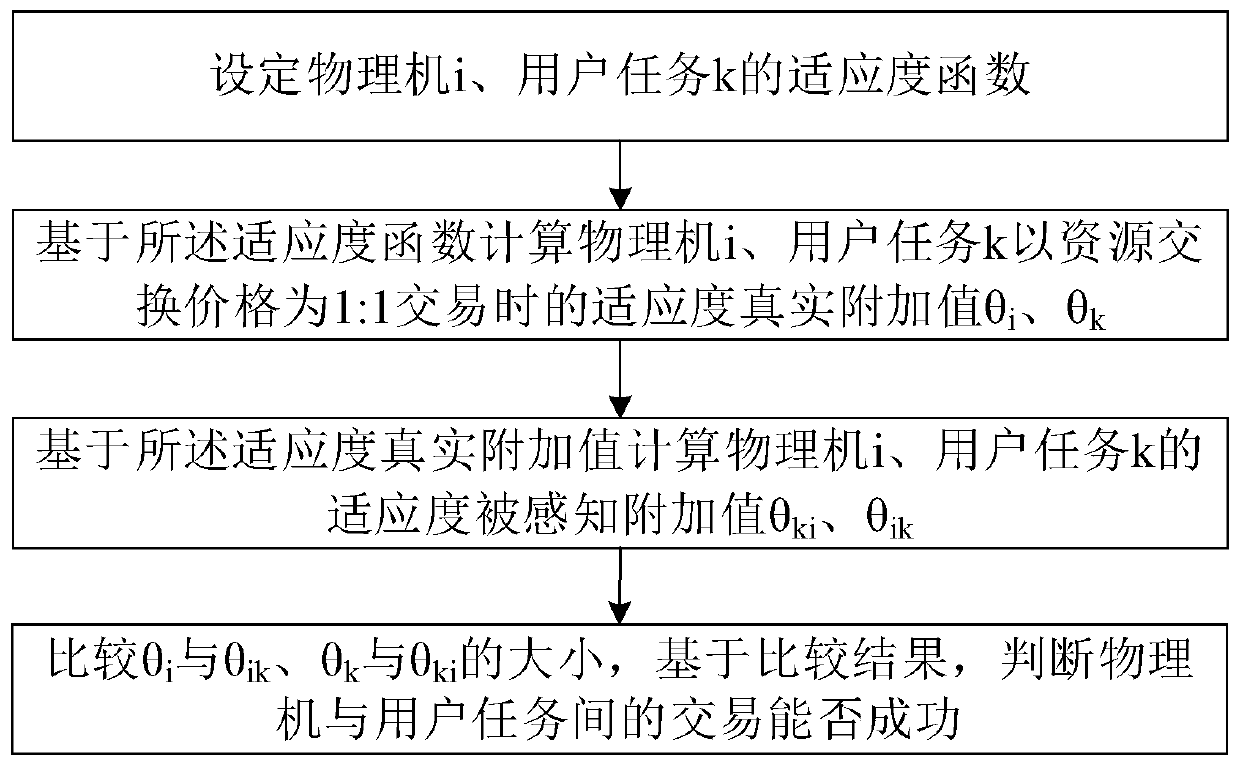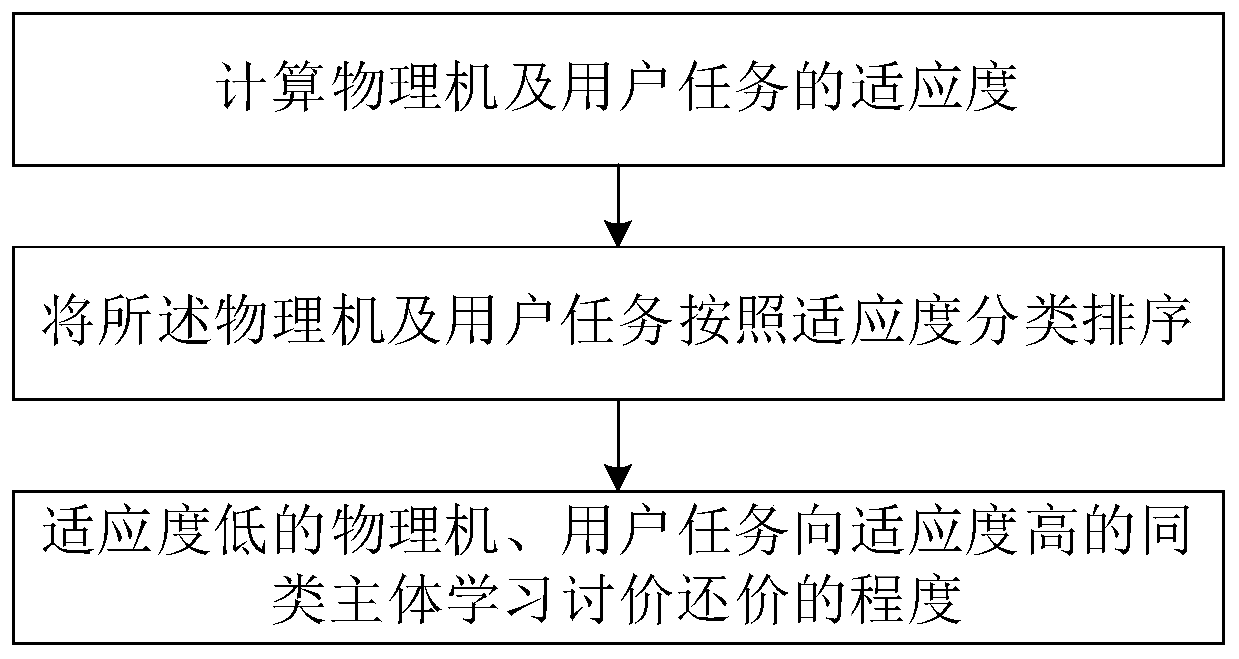Distributed resource dynamic allocation method based on evolutionary game theory
A distributed resource and dynamic allocation technology, applied in resource allocation, program control design, instruments, etc., can solve problems such as insufficient consideration of balanced use of resources, lack of consideration of psychological expectations, single game process, etc., and achieve information processing capabilities. The effect of small requirements, improved robustness, and improved resource allocation efficiency
- Summary
- Abstract
- Description
- Claims
- Application Information
AI Technical Summary
Problems solved by technology
Method used
Image
Examples
Embodiment 1
[0066] Such as figure 1 As shown, this embodiment proposes a method for dynamically allocating distributed resources based on evolutionary game theory, including:
[0067] S1. Determine whether the supply and demand of the physical machine and the user task match, if yes, execute step S2, if not; execute step S3;
[0068] The two main categories of resource allocation are: the owner of various resources - physical machine, and the resource demander - user task. Resource resource allocation is to match the resources owned by the physical machine with the resources required by user tasks, so as to allocate the resources of the physical machine to the corresponding user tasks.
[0069] Specifically, the resource amount of physical machine i is P i =[p i1 ,p i2 ,...,p im , d i1 , d i2 ,...,d im ], where m is the number of resource types, p ij is the possession of resource j by physical machine i, d ij is the usage amount of resource j by physical machine i. The resource...
Embodiment 2
[0111] Such as image 3 As shown, on the basis of the first embodiment, this embodiment adds a game learning step. After allocating resources to user tasks, using the resource allocation results, the physical machine and user tasks learn from other subjects of the same kind to optimize the game process. Specifically:
[0112] S5. Calculate the fitness of the physical machine and user tasks;
[0113] Fitness reflects the result of resource allocation. For a physical machine, the higher the fitness, the more efficiently its resources are used, and the lower the fitness, the worse the resources are used. For user tasks, the higher the fitness, the more balanced resources the user gets, and vice versa, the less balanced resources the user gets. Therefore, the present invention calculates the fitness of the physical machine and the user task to evaluate the game result of the physical machine and the user task, and guides the next game process according to the feedback of the g...
PUM
 Login to View More
Login to View More Abstract
Description
Claims
Application Information
 Login to View More
Login to View More - R&D
- Intellectual Property
- Life Sciences
- Materials
- Tech Scout
- Unparalleled Data Quality
- Higher Quality Content
- 60% Fewer Hallucinations
Browse by: Latest US Patents, China's latest patents, Technical Efficacy Thesaurus, Application Domain, Technology Topic, Popular Technical Reports.
© 2025 PatSnap. All rights reserved.Legal|Privacy policy|Modern Slavery Act Transparency Statement|Sitemap|About US| Contact US: help@patsnap.com



